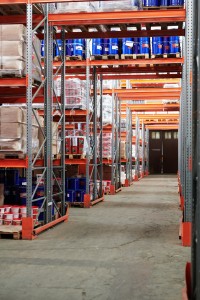
 Become a PowerPoint Guru by Dave Tracy
Become a PowerPoint Guru by Dave Tracy
Learn the methodologies, frameworks, and tricks used by Management Consultants to create executive presentations in the business world.

 Become a PowerPoint Guru by Dave Tracy
Become a PowerPoint Guru by Dave Tracy
 Majority of pharmaceutical companies are persisting with decade old processes and routines. They have transactional relationships with suppliers, lack of concerted efforts to progress ahead, and no vision to reap productivity rewards. The reasons for continuing with these traditional practices include tax regimes, regulatory hurdles, and stable revenues from customers dependent on existing industry offerings.
Majority of pharmaceutical companies are persisting with decade old processes and routines. They have transactional relationships with suppliers, lack of concerted efforts to progress ahead, and no vision to reap productivity rewards. The reasons for continuing with these traditional practices include tax regimes, regulatory hurdles, and stable revenues from customers dependent on existing industry offerings.
Disruption—spurred by technological Innovation, fluctuating customer demand patterns, and more agile and creative competitors—has forced the pharmaceutical sector to think of ways to face these challenges, survive, and thrive. One of the strategic response to this competitive disruption—by leading manufacturers—is to reexamine their manufacturing operations, embracing agile principles, reducing costs, revolutionizing procurement and distribution functions, and striving to achieve Operational Excellence. Above all, they view their supply chain not as a cost center, but as a source of Competitive Advantage.
The increasing influence of generic drugs is another challenge for large multinational pharmaceuticals. In the past, multinational companies (MNCs) dominated the market owing to possessing a number of high-market drugs protected under patents. Patent protection afforded them the leverage to set high prices on each product. The scenario is fast changing. Expiry of high-market drugs patents is creating a huge opening for generic competitors and the space is widening compared to the past.
In the past, pharma manufacturers were able to counter the threat to generic competitors by developing new drugs. However, this is becoming difficult and the new drugs pipeline is shrinking with time. R&D expenditure has continuously gone up, however, drug approval from the authorities has not kept paced with it. It has rather declined, straining the MNCs further.
Other disruptive factors include newer distribution methods, public health plans favoring generic drugs over proprietary ones due to cost effectiveness, the newer internet / mail delivery options displacing traditional pharmacy dispensing options. Pharmacy chains—e.g. Walgreens—have given a leverage to the retailers to negotiate reduction in medicine prices where again generics have an edge over MNCs.
Moreover, the trend of drugs purchased through a formal tender process is increasingly gaining acceptance, adding to the difficulties of large pharma manufacturers. Additionally, strict regulations are minimizing the cost benefits that MNCs traditionally enjoyed in the past.
All these factors have forced the pharma companies to reorganize their Supply Chains in a more flexible manner to manage complexities, bring in efficiency, and contain costs to compete in off-patent segment with generics.
Reorganization of a conventional pharmaceutical Supply Chain into an Agile, flexible, and inexpensive Supply Chain warrants developing Operational Excellence and Cost Reduction competencies. This necessitates 5 strategic steps (phases):
Let’s discuss these steps in detail.
Large pharma MNCs typically maintain the Supply Chain of all of their drugs with a single strategy of retaining high inventory and service levels. Such a strategy can only work for products having a high profit margin, in a static environment. It is not suitable for low-margin products, contrasting environments, and does not take into account fluctuations in demand patterns. An appropriate approach is to implement a multiple Supply Chains model based on individual products and markets.
The 2nd step in Pharma Supply Chain Reinvention involves quick distribution of different versions of products to markets based on demand. For low-margin products with high demand volatility, the Supply Chain Management Strategy should be to employ Pack-to-Order system. The Pack-to-Order approach involves developing a version of a product that could be timely dispatched to several markets of varying demand across the globe. This approach coupled with Postponement Strategy—where products are packed to order during later stages of production based on regional demand—assists in trimming down the inventory, reducing complicatedness, and enhancing Supply Chain nimbleness to demand volatility.
Interested in learning more about how to reinvent your Pharmaceutical Supply Chain? You can download an editable PowerPoint on Pharmaceutical Supply Chain Reinvention here on the Flevy documents marketplace.
You can download in-depth presentations on this and hundreds of similar business frameworks from the FlevyPro Library. FlevyPro is trusted and utilized by 1000s of management consultants and corporate executives. Here’s what some have to say:
“My FlevyPro subscription provides me with the most popular frameworks and decks in demand in today’s market. They not only augment my existing consulting and coaching offerings and delivery, but also keep me abreast of the latest trends, inspire new products and service offerings for my practice, and educate me in a fraction of the time and money of other solutions. I strongly recommend FlevyPro to any consultant serious about success.”
– Bill Branson, Founder at Strategic Business Architects
“As a niche strategic consulting firm, Flevy and FlevyPro frameworks and documents are an on-going reference to help us structure our findings and recommendations to our clients as well as improve their clarity, strength, and visual power. For us, it is an invaluable resource to increase our impact and value.”
– David Coloma, Consulting Area Manager at Cynertia Consulting
“FlevyPro has been a brilliant resource for me, as an independent growth consultant, to access a vast knowledge bank of presentations to support my work with clients. In terms of RoI, the value I received from the very first presentation I downloaded paid for my subscription many times over! The quality of the decks available allows me to punch way above my weight – it’s like having the resources of a Big 4 consultancy at your fingertips at a microscopic fraction of the overhead.”
– Roderick Cameron, Founding Partner at SGFE Ltd
 A traditional Value Chain involves a linear sequence of activities—from conversion of raw materials into components which are assembled into products. The products are then distributed, marketed, sold, and serviced. Management plans and execute strategies and operations based on this sequence.
A traditional Value Chain involves a linear sequence of activities—from conversion of raw materials into components which are assembled into products. The products are then distributed, marketed, sold, and serviced. Management plans and execute strategies and operations based on this sequence.
This set of activities worked well for organizations in the past. However, this linear progression does not encourage Innovation and provides little protection from the risk of being outperformed by rivals in today’s disruptive markets. Such a competitive environment calls for implementing more robust ways of managing Customer Demand and Value Creation.
An effective approach to deal with this challenge is the Value Grid Analysis Model. The Value Grid approach provides a perspective beyond traditional linear progression of activities, where organizations need to balance equilibrium between suppliers and manufacturers aside from concentrating only on reducing lead times. It outlines new opportunities and risks for organizations.
The Value Grid Analysis provides a number of routes to improve Performance and reduce risks. It encompasses the following 3 pathways—or dimensions:
The Value Grid Framework necessitates diverting leadership attention towards 3 key opportunity areas to create Competitive Advantage:
Let’s dive deeper into the 3 opportunity areas.
The first opportunity area to drive competitive advantage pertains to controlling internal and external customers’ demand. It warrants a company to manage customer demand upstream (suppliers and companies that supply to suppliers) as well as downstream (customers). By managing customer demand downstream, organizations control the decision makers responsible for the purchase decision. When companies are unable to control the decision makers, they look for levers across the Value Chain to influence decisions. These levers include direct advertisements to the end users, focusing on distributors, or incentivizing retailers to recommend a product. Organizations also try to influence upstream, e.g., their R&D units, to create products which can be used in conjunction with the existing product range to boost their efficacy and benefits for the end-users, ultimately influencing consumers’ decisions downstream.
The 2nd opportunity area involves linking information sharing to influence decision making. A few manufacturers prefer to partner with those suppliers who openly disclose the information (capabilities, flexibility, and pricing structures) of their 2nd-tier suppliers with them. This assists them in planning and helping the suppliers manage materials and prices better.
For instance, with increased tariff on imported steel and price of steel continuously going up, car manufacturers like Honda purchase steel in bulk and sell it to their suppliers at a reduced rate. This helps them keep the prices of their cars down and compete better.
Nonlinear thinking (Value Grid Model) enables the organizations to determine innovative solutions beyond the scope of traditional Value Chains. To manage excess demand organizations take on multiple Value Chain tiers to control demand and buyers’ power.
Leading manufacturers evaluate multiple value chain points for their participation in order to scale. They sell not only to Original Equipment Manufacturers but also in the aftermarket. Supplying to more than one Value Chain tier allows organizations to withstand pressure from OEMs to reduce costs, demand shifts, and offers attractive margins.
Interested in learning more about the 3 opportunity areas of the Value Grid Analysis Framework? You can download an editable PowerPoint on Value Grid Analysis here on the Flevy documents marketplace.
You can download in-depth presentations on this and hundreds of similar business frameworks from the FlevyPro Library. FlevyPro is trusted and utilized by 1000s of management consultants and corporate executives. Here’s what some have to say:
“My FlevyPro subscription provides me with the most popular frameworks and decks in demand in today’s market. They not only augment my existing consulting and coaching offerings and delivery, but also keep me abreast of the latest trends, inspire new products and service offerings for my practice, and educate me in a fraction of the time and money of other solutions. I strongly recommend FlevyPro to any consultant serious about success.”
– Bill Branson, Founder at Strategic Business Architects
“As a niche strategic consulting firm, Flevy and FlevyPro frameworks and documents are an on-going reference to help us structure our findings and recommendations to our clients as well as improve their clarity, strength, and visual power. For us, it is an invaluable resource to increase our impact and value.”
– David Coloma, Consulting Area Manager at Cynertia Consulting
“As a small business owner, the resource material available from FlevyPro has proven to be invaluable. The ability to search for material on demand based our project events and client requirements was great for me and proved very beneficial to my clients. Importantly, being able to easily edit and tailor the material for specific purposes helped us to make presentations, knowledge sharing, and toolkit development, which formed part of the overall program collateral. While FlevyPro contains resource material that any consultancy, project or delivery firm must have, it is an essential part of a small firm or independent consultant’s toolbox.”
– Michael Duff, Managing Director at Change Strategy (UK)
 As the last decisive step in customer service, a warehouse ensures cost effective distribution. Latest technological innovation has turned warehousing into a competitive advantage. It offers untapped potential for improvement. However, warehousing is a hugely neglected part of global supply chains. There is inconsistency in picking, packing and shipping orders, storing receipts, and managing inventory and logistics operations.
As the last decisive step in customer service, a warehouse ensures cost effective distribution. Latest technological innovation has turned warehousing into a competitive advantage. It offers untapped potential for improvement. However, warehousing is a hugely neglected part of global supply chains. There is inconsistency in picking, packing and shipping orders, storing receipts, and managing inventory and logistics operations.
These and the following roadblocks in the way of smooth warehousing operations and Lean Management exist in every traditional warehouse:
These shortcomings call for implementing Lean Warehousing methodology to unlock improvement opportunities and savings in operational, efficiency, and maintenance related costs. First initiated by Toyota, the Lean Warehousing approach has a deep emphasis on eliminating 3 basic limitations: waste, variability, and inflexibility. The Lean Warehousing methodology focuses on the following 3 improvement areas:
The Lean Warehousing methodology concentrates on increasing productivity and reducing operating costs. This is achieved by:
A Lean Warehouse seeks to take the customer quality to the next level by avoiding:
Improving service levels is at the center of a Lean Warehousing methodology, which involves:
Lean Warehousing Transformation entails streamlining operations to identify waste, know how to increase service levels, implement standardization and innovative ideas, and learn to evaluate and manage performance. Such transformation becomes a reality in an experiential learning environment and by developing organizational capabilities in 3 critical areas:
The organizational capability to configure and optimize all company physical assets and resources to create value and minimize losses. The focus areas under operating systems include eradicating variability, encouraging flexibility, and promoting end-to-end design.
The organizational capability to strengthen formal structures, processes, and systems necessary to manage the operating system to achieve business goals. The focus areas under Management Infrastructure are performance management, organizational design, capability building, and functional support process.
The organizational capability to manage the way people think, feel, and act in the workplace individually as well as collectively. The target areas to focus on here include a compelling purpose, collaborative execution, up-to-date skills, drive to improve, and committed leadership.
Lean Warehousing Transformation necessitates developing a “Model Warehouse,” which presents facilities for supply chain people to practically experience state-of-the-art warehouse operations in a modern warehouse and shop-floor environment. The Model Warehouse incorporates newest technology and systems, and offers real-life conditions for building capabilities—i.e., optimization of storage, pick and pack, and dispatch processes. Newest technologies—e.g., Smart Glasses and HoloLenses—available at the facility help improve the performance of pickers significantly and execute multi-order picking efficiently.
Such a setting allows people to observe and analyze the performance of an exemplary warehouse and implement this knowledge at their own premises. Leading organizations organize a week-long rigorous knowledge sharing workshop—in an experiential learning environment of a Model Warehouse—for their people to have a hands-on experience to learn Lean Warehousing, actual picking, packing, root cause analysis, and performance management. The participants of the Model Warehouse Knowledge Sharing Workshop are excellent candidates for “change agents” to implement Lean Transformation.
Interested in learning more about Lean Warehousing, Model Warehouse Implementation, and Lean Warehousing Transformation? You can download an editable PowerPoint on Lean Warehousing Transformation here on the Flevy documents marketplace.
You can download this and hundreds of other consulting frameworks and consulting training guides from the FlevyPro library.
Error: Twitter did not respond. Please wait a few minutes and refresh this page.